Healthcare IT Support: Understanding the Importance of Medical IT
As the medical sector continues to evolve with the help of HIT, Information Technology (IT) continues to find ways to advance pieces of equipment and techniques to help patients get care safely and with minimal invasion. Through HIT, readily available tools like computers, medical terminologies, and clinical guidelines help pave the way for new solutions in tackling challenging health and medical scenarios.
Medical technologies can now improve health and save lives through innovative devices and diagnostic problem-solving techniques. Skilled medical practitioners also use information and communication systems to converse with relevant personnel. This practice may take less time than before to let health professionals diagnose patients’ concerns with minimal time and effort.
The Role of IT in the Medical Sector
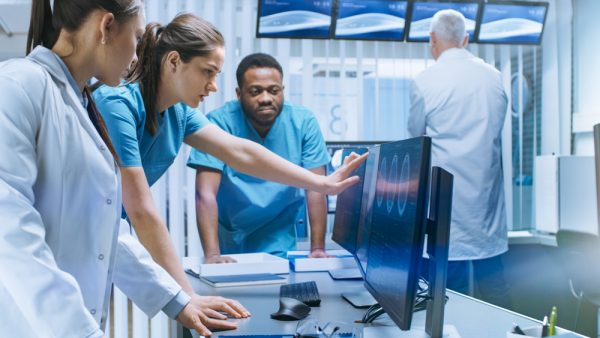
HIT allows health and medical experts to use applications and techniques to store, retrieve, share, and use health care data across networks. Various departments and sectors can take advantage of the many facets of HIT. Patients, medical experts, and students can use modern healthcare technologies to support different aspects of medical education, patient care, and clinical office organization.
For example, Virtual Reality (VR) helps student surgeons practice their skills in a digital environment. Thus, the use of VR helps cut costs for the educational institution or hospital. Also, this technology lets learners practice their skills at practically any time since there will not be a dire need for a human body for the exercise.
HIT professionals can develop medical technologies that can be used to:
- Prevent diseases
- Diagnose health concerns
- Monitor existing issues
- Treat known health complications
- Provide proper care for patients
Today, many Health Informatics training programs exist to help budding medical professionals in learning modern practices. These new drills and systems may also open the doors for employment opportunities in the medical industry. For example, practitioners may want to become part of a Healthcare IT support team. Hospitals and other medical establishments with personnel exuding specialized skill sets may present additional benefits like cutting overhead costs.
The Interoperability of HIT
Interoperability is the trait of computer systems to communicate through a network. The establishment of a digital communication network is possible even when different manufacturers are at play. This technology that people use to exchange information between devices, databases, and applications might be a crucial element to the modern standards of healthcare.
Interoperability also helps reduce the time that healthcare professionals and other connected devices use to create and manage meaningful conversations. Doctors can also use this vital HIT characteristic to support diagnoses and treatments for their patients.
This characteristic in the health and medical industries allow different computer and software systems to communicate and share data from various sources. The origins of these pieces of information include:
- Clinics
- Pharmacies
- Hospitals
- Laboratories
According to the Healthcare Information and Management Systems Society (HIMSS), there are four levels of interoperability in the healthcare industry. These levels are:
- Foundation (Level 1) – The requirements needed for an application or system to communicate with a compatible element in the network.
- Structural (Level 2) – The format, organization, and syntax of exchanging data.
- Semantic (Level 3) – The codification of data and other underlying models.
- “New” Organizational (Level 4) – The governance, legal, organizations, policy, and social considerations to help manage the communication of data among organizations in the industry.
Medical establishments prioritizing HIT interoperability may lead to improvements in doctor-patient engagements. Also, it can help enhance positive patient outcomes as professionals can spend more time reviewing the details of illnesses and injuries due to reduced waiting time.
This vital trait in HIT may also let the healthcare practitioners and establishments to gain additional benefits. These advantages may include improved data efficiency and safe treatment transitions.
The Benefits of HIT for the Patients
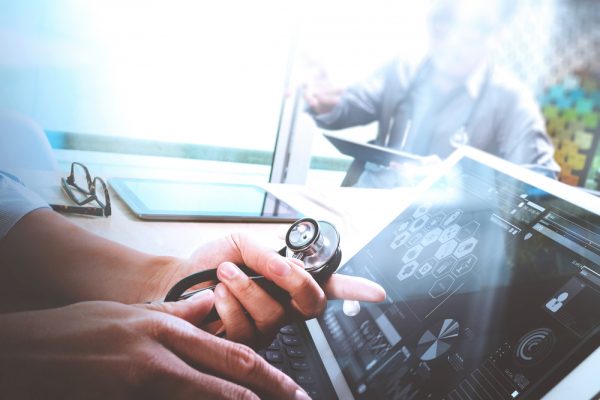
Healthcare innovations help businesses and professionals in the sector to provide quick and accurate medical records to patients. Electronic Health Records (EHR) presents different benefits for many individuals. These advantages include:
Advantages of Computers in the Medical Field?
Computers have had some kind of impact on all economic sectors. Technology improvements have completely changed business operations, corporate communications, and corporate marketing.
Reduction of Paper Requirements
Various healthcare centers require their patients to bring several documents for diagnoses and treatments. Completing all the paperwork necessary for the procedures can waste valuable time. Medical and manufacturing establishments can reduce this “hassle factor” for their staff to manage the records with the implementation of the EBR system and EHR.
Safe Data Transmission
Courier services are ideal for delivering and receiving packages. But, time still plays a significant factor in package deliveries. In the healthcare scene, there are specific scenarios when time is of the essence. Life-or-death scenarios aren’t rare in hospitals and clinics.
Doctors and medical technicians need all the relevant data as fast as possible. HIT and the accomplishment of a stable digital network lets appropriate members send and receive data in a few seconds.
Once all providers share accurate and updated information about treatments, it enables persons involved to make the best possible decisions in time. This characteristic is particularly essential during a healthcare crisis.
Coordinate Care
Different patients might need varying treatment procedures. That individual might have to go to three different doctors to acquire the right care. Also, those healthcare specialists might not include the patient’s primary technician.
HIT can help warn healthcare providers before they prescribe medicines that may potentially aggravate health issues. Also, EHR may alert and update other health experts about a particular patient, so they meet proper care standards.
Direct Access to Health Records
Many patients have the right to see their health records. So, that individual can help identify any missing or wrong information. The use of HIT in medical facilities helps their customers view and modify their data to minimize errors during reports and treatments.
Like other benefits, this characteristic helps reduce the time for the process to complete. So, healthcare employees can let their clients gain access to their documents in as little time as possible. Also, these technologies help reduce the effort used in trying to search for medical reports.
The Benefits of HIT for Practitioners in the Industry
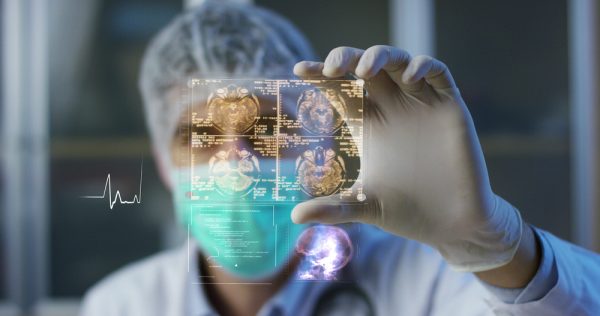
The advantages of HIT are not only for the patients but also for the healthcare professionals. Many businesses in the health and medical sectors use different IT forms and functions to create better solutions for storing and transmitting information across sources. Using these technologies can help supply medical experts and practitioners with various benefits like:
Improved Patient Safety
Several doctors and other healthcare professionals value their patients’ safety above everything else. HIT systems may not only store information, but they also display relevant data concerning the patient.
These technologies enable routine program security checks when developments occur during treatment operations. Healthcare employees can use IT devices and procedures to store data like medical imaging and lab results. Also, the ability to store all information in one secure digital location helps create quick decision-making.
Ultimately, HIT can help hospitals, clinics, and imaging centers to avoid costly mistakes. These errors might even put the lives of patients at risk.
Enhanced Employee Performance
Staff performance, institution efficiency, and patient care procedures may improve thanks to HIT. First, specific devices might help staff members compute the probabilities of the success of administering particular treatment plans. These systems allow concerned professionals to make proactive decisions based on past and current performance data.
Particular apps connected to patient care systems also allow customers to submit feedback regarding the services rendered. In turn, staff members can view these essential reviews to supply better assistance in future operations.
Reduction of Operational Costs
IT systems may help healthcare institutions to strategically allocate valuable resources to save money in the short- and long-terms. These technologies help deliver updated information, which might also happen in real-time.
One example of this benefit using HIT systems includes a better synergy with relevant staff skills and reading comprehensive data. The up-to-the-minute data allows better management of supplies, making inventory tracking more efficient than before.
Proper Care Coordination
Delivering messages and coordinating tasks with relevant personnel through word-of-mouth practices might offer quick and responsive results. However, disseminating several tasks might lead to chaos in hospitals and clinics. Blaming the upper management because of the subsequent confusion in the medical environment won’t cause things to correct themselves.
Instead of pointing fingers, implementing medical IT systems help healthcare facilities disseminate, record, and share all pertinent updates to appropriate staff members. In turn, these technologies help improve patient satisfaction and care with the reduction of potential errors during patient diagnosis and healthcare operations.
Lower Healthcare Costs
A study from the University of Michigan showed that shifting record management from paper to digital files reduced outpatient care costs by 3%. The researchers estimated their savings to have an average figure of $5.14 per patient. In a small clinic, that amount might seem paltry. But, the savings from a large healthcare corporation using approximately the same amount of money earned might be innumerable.
Improved Data Security and Storage
Many HIT systems use online storage facilities to house essential data. These arrangements may take advantage of cloud computing technologies to help provide large data banks for files. In comparison, storing paper documents in file cabinets promote several difficulties, like filling spaces in file cabinets. Also, using paper to write and store information might not be an economical way to use storage.
Furthermore, many medical IT machines using connected features use enhanced security measures to safeguard files. These safety features may include 2-step verifications and extra firewalls to reduce the risks of successful cyber-attacks. Using updated technologies might help prevent data leaks and other IT tragedies in the medical sector.
The Importance of Medical IT in Education
HIT systems aren’t only essential for professionals in the healthcare and medical industries but are also beneficial for the medical students. IT developments offer significant changes in medical education, as the available access to Internet resources for additional studies. Also, portable computers and handheld devices promote better ease of access to healthcare information regardless of the location.
College networks, HIT, and the Internet work together to help medical students and teachers view, modify, and organize data to aid in proper studies. These elements help provide near-instant communication as online messaging reduces the time it takes to send and receive crucial information.
Relevant software also helps concerned individuals with a quick turnaround of evaluation. Students may check progress results within colleges and universities without the need to wait for their educators to announce the information in classrooms.
Another advantage of medical IT in educational facilities is the use of Artificial Intelligence (AI) in specific programs. AI in healthcare may help students and other medical practitioners to calculate the probabilities of success in doing particular operations.
Learners may view and modify readings based on their current understandings of related subject matters without the need to look for and waste precious resources. Consequently, teachers can use AI to show the opportunities and risks involved when doing specific procedures during particular medical operations.
In fact, educators and their students can take advantage of free and paid medical technologies to help in achieving higher learning for specific subjects nowadays. The latest information and developments in the healthcare and pharmaceutical industries become readily available on the Internet. These elements help encourage proper education and research.
Final Thoughts
Various areas exist in the medical IT sector that needs improvement before technologies are useful to their fullest extent. However, many people don’t argue over the idea that IT plays a significant influence on education and medicine.
These systems still can’t replace the importance of human interaction between the students and the teachers and the patient and the doctor. In the pursuit of modern technologies, don’t disregard the importance of building close relationships among other learners and educators or the patient-doctor relationship.
Many healthcare experts know and uphold the importance of medical IT. Several benefits are in store for healthcare professionals and facilities that decide to make use of HIT systems. But, these technologies aren’t without challenges. For example, senior nurses might find it challenging to switch from old clinical practices to modern techniques. But, these difficulties may not be impossible to overcome.
Health institutions should work as one unit in the quest for upgrading their internal systems. In turn, various healthcare and medical organizations can bring better care to their patients.

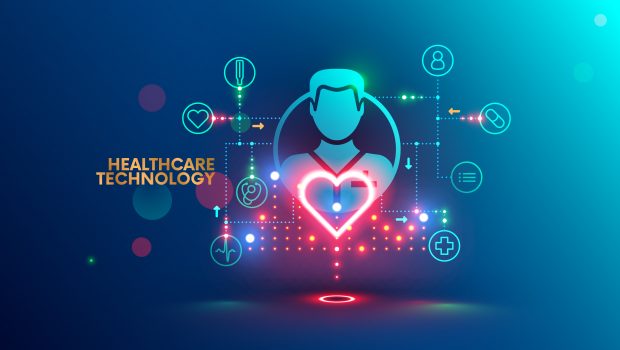

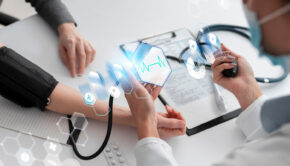
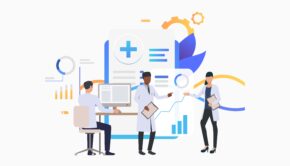
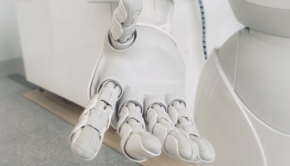




![Movies vs Games [Infographic]](https://technofaq.org/wp-content/uploads/2016/09/movies_vs_games-150x150.jpg)





